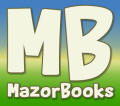
|
| • Holiday Gifts |
| Holiday Central > Sukkot > Many Names Many Themes |
Sukkot: Many Names Many Themes
By: Rivka C. Berman, Contributor
Click Here for More Holiday Articles

|
CHILDREN'S BOOK for AGES 5-11 |
Sukkot absorbs several different but intrinsically related meanings derived from the terms used to describe the holiday in the Torah and later writings. Sukkot is known by several names, each hints to another way of looking at the holiday.
Sukkot is the last in the cycle of pilgrimage festivals. Passover and Shavuot are the other two. When the ancient Holy Temple stood, Jews gathered in Jerusalem for special sacrifices and ceremonies to mark the day. Each of the three festivals, known collectively as the Shalosh Regalim, the three on foot (a reference to the mode of transport used by the pilgrims), has historical and agricultural components. Sukkot refers to the holiday’s historical basis, Chag Ha’Asif, the Holiday of Gathering emphasizes its agricultural roots. The third name, Z’man Simchateinu, signals the overflowing happiness of the holiday.
-
Sukkot - Booths
-
Chag Ha'Asif - Holiday of Gathering
-
Zman Simchatenu - Our time for celebration
-
Hallel - Prayer of Praise
Sukkot
- Booths
God instructed the
Jewish people to construct booths. “You
shall live in booths seven days. All
citizens of Israel shall dwell in booths” (Levitcus 23:42).
Why?
“So that your generations may know that I made the Children of Israel dwell in booths when I brought them out of the land of Egypt” (Leviticus 23:43)
The Mishna, the collection of Jewish laws and traditions compiled about 200 C.E., preserves Rabbi Akiva and Rabbi Eliezer’s different interpretations of this verse. Rabbi Akiva understood the booths as actual shelters built by the Children of Israel. Rabbi Eliezer argued that the sukkot actually referred to the clouds of glory that surrounded the newborn nation, protecting them from desert dangers. (T.B. Sukkot 11b)
Sukkot celebrates the powerful response God had to the Children of Israel’s faith. They followed God out into the burning hot, frightfully cold desert certain that God would watch over them. In doing so, this band of newly freed slaves laid the foundation of faith through hard times an example Jews have clung to throughout their tumultuous history.
Chag
Ha’Asif – The Holiday of Gathering
“After the
ingathering from your threshing floor and vat, you shall hold the Feast of
Booths for seven days. You shall hold festival to the Lord you God seven
days, in the place the Lord will choose; for the Lord your God will bless
all your crops and all your undertakings, and you shall have nothing but
joy.” (Deuteronomy 16:13,15)
“Also in the fifteenth of the seventh month when you have gathered in the labors out of the field you shall keep a feast to the Lord.” (Leviticus 23:39)
During the busy harvest season, farmers would build temporary shelters in the fields to save themselves the trouble of heading back home for rest. They also did this to act as human scarecrows as their presence would help keep thieves at bay. The sukkah is reminiscent of these harvest huts. Modern scholars have argued for the validity of the sukkah’s agricultural roots because the leafy covering stipulated in sukkah construction codes are more similar to huts farmers would build than to the heftier huts nomads would need.
Is an agricultural custom relevant today?
No matter how diligently a farmer plants, pulls weeds, and fertilizes, the harvest – plentiful or pitiful – is in God’s hands. Most modern workers are far removed from the toil of the soil, but the lesson of the Chag Ha’asif remains. A family of farmers who had spent long days working in the field could gaze upon their neatly bound sheaves of wheat and credit their success to their own hard work, but Chag Ha’asif reminds them to thank God for their bounty. Workers, who had spent long days in meetings and writing reports, could gaze at their paycheck and credit their success to their own hard work, but Chag Ha’asif reminds them to thank God for their bounty. Recognizing God’s place at the center in the wheel of fortune keeps egos in check during the good times and keeps despair in its place during hard times.
Zman
Simchateinu
Rosh Hashannah and
Yom Kippur wipe the slate clean for the new year.
Celebrating Sukkot ensures that
the first mark on this tabula
rasa is an etch of joy to put the new year on the right course.
One of the giants of Kabbalah Issac Luria (16th century) instructed his disciples that the cultivation of joy is one of the prerequisites for attaining mystical illumination. Having gone through the necessary ten days of teshuva (return) from Rosh HaShanna through Yom Kippur we are ready to begin our engagement with the new year. That engagement can only take place with joy as one of its elements, the joy of Sukkot sets our bearings on the right course.
Hallel
- Prayer of Praise
Reflecting the
unadulterated spiritual joy on tap during this holiday, the full Hallel,
prayer of praise recited during morning services, is said each day of
Sukkot. In contrast, for most
of Passover’s seven days an abridged Hallel is recited.

Mazor Guide for Sukkot brings you much more about the holiday, its meaning and its traditions... See the links below.
|
|
|
|

|
| • Holiday Gifts |
|
|
 |
| • Celebrations Gifts |
|
·
Wedding Gifts · Bar Mitzvah Gifts · Baby Gifts · Jewish Books at Great Prices |
KOSHER BY DESIGN Amazing New Kosher Cookbook. BUY |
Mazor Guides: Wealth of Information and Resources
- Mazor Guide - The Ultimate Guide to
Living Jewish -
- Guide to Jewish
Holidays -
-
Bar Mitzvah
and Bat Mitzvah Guide -
-
Guide to a
Jewish Wedding -
-
Guide to Jewish Celebrations -
-
Guide to Kosher Living -
- Infertility and
Judaism: A Guide -
- The Get (Gett)
- the Jewish Divorce: A Guide -
- Zei
Gezunt: Jewish Perspective on Health -
- Jewish Genetic Diseases -
-
Death and Mourning in
Judaism -
Copyright 1998-2024 MazorNet, Inc.
| http://www.MazorGuide.com | http://www.MazorBooks.com | http://www.Kosher-Directory.com | http://www.JewishCelebrations.com






